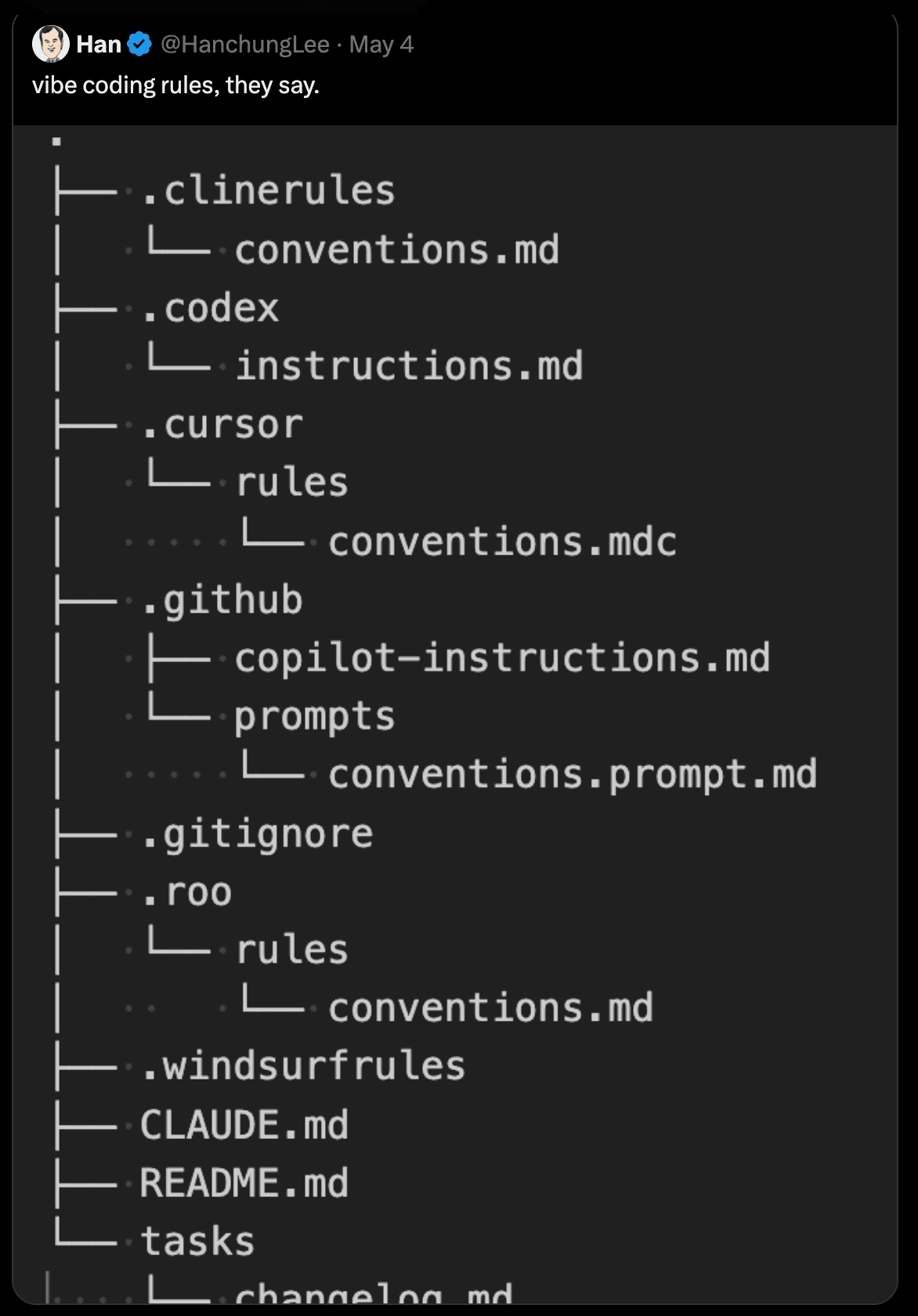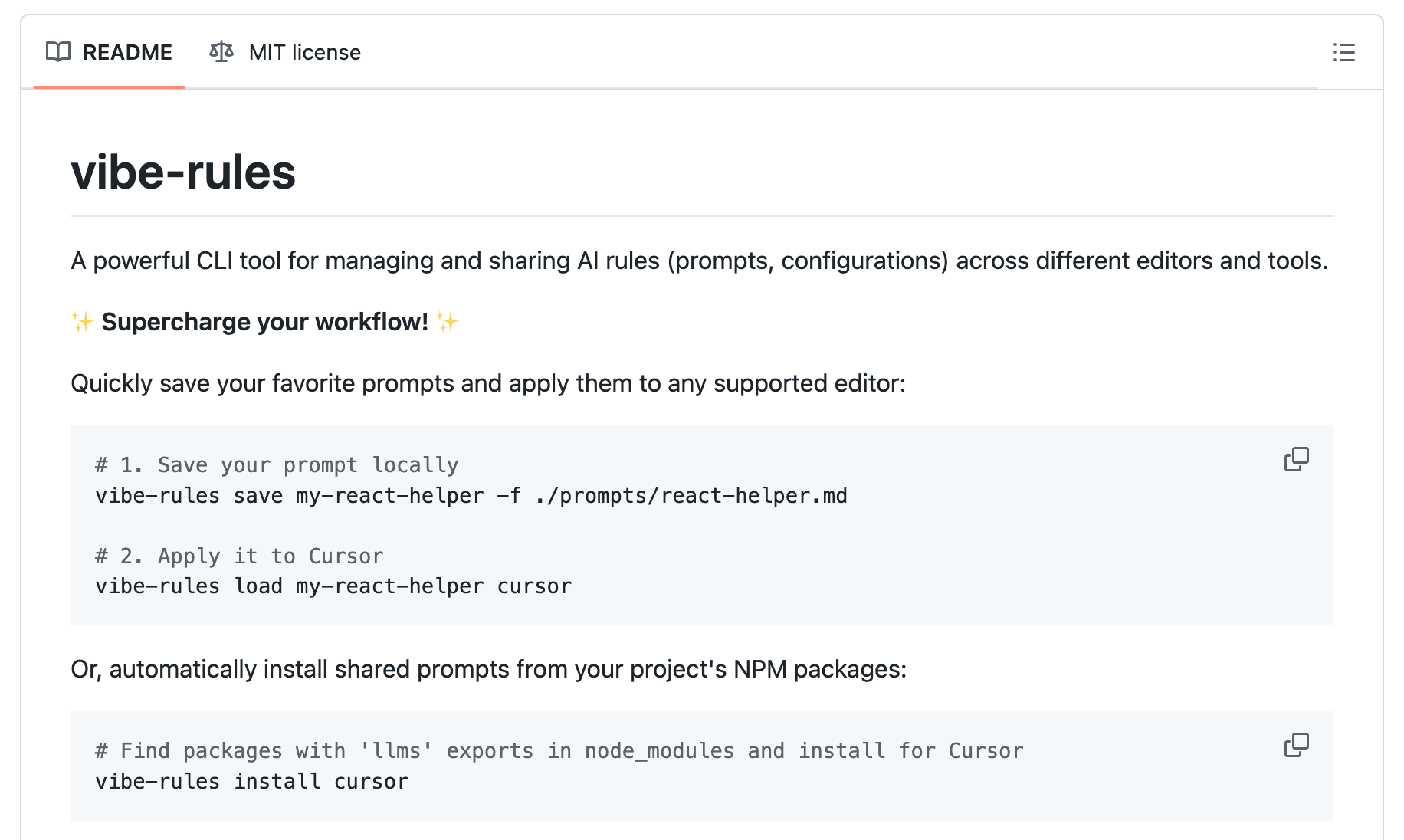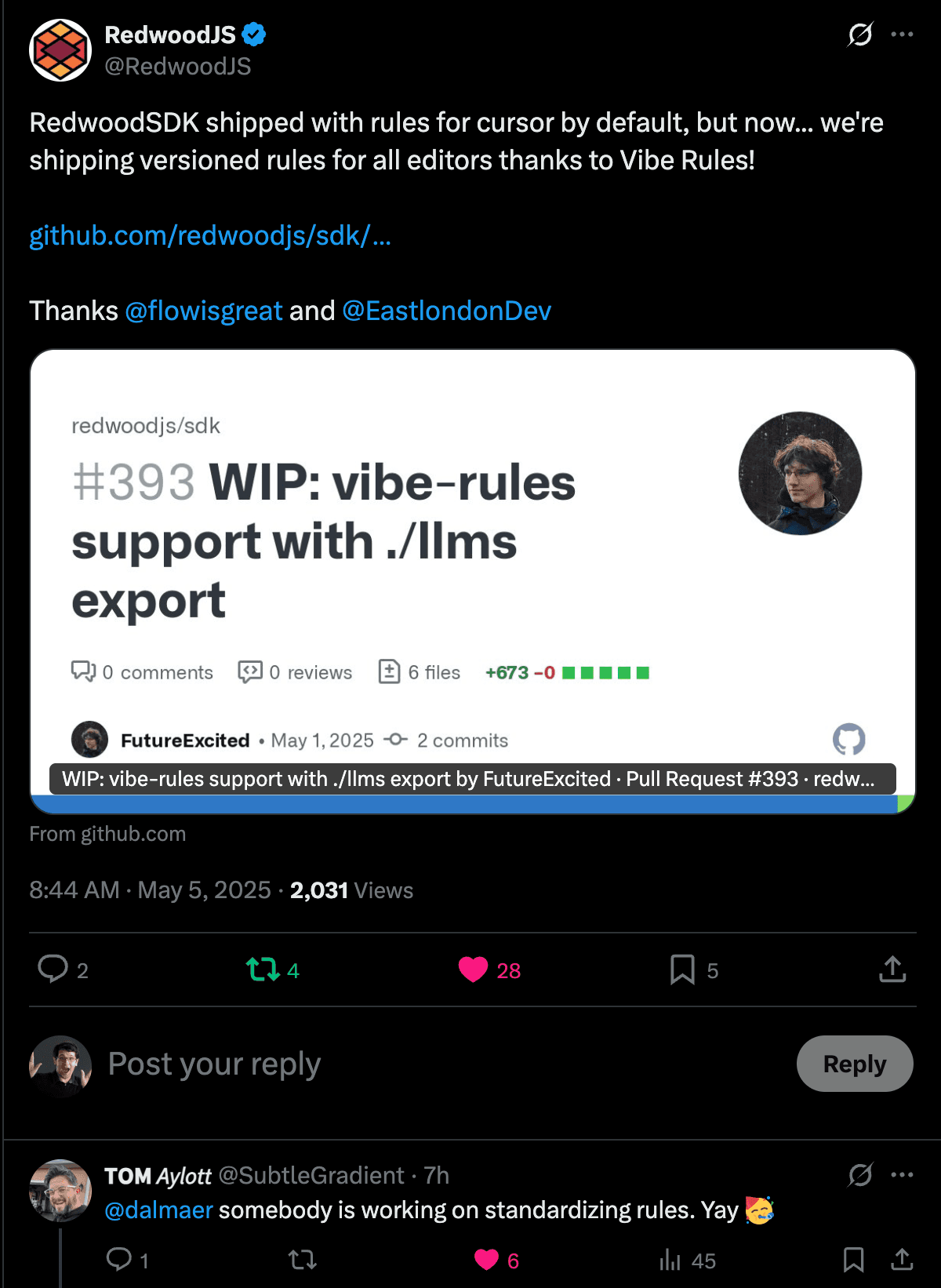
I love how all of our favorite AI development tools are giving us more ability to steer them and share the context that's in our heads. Some things are my global desires, while others apply project-wide or org-wide.
This has all given birth to a plethora of "rules" files that we need to manage, and if you're trying a variety of tools, it can start to look like this:

I'm a bit of a geezer, so I often get flashbacks to past software development cycles, and this one reminds me of Java's evolution. There were a variety of Java backend servers, each with their own ways to configure and deploy to. After a flood of innovation, patterns emerged, standards formed, and we built components that could be deployed in multiple containers.
For example, there was a phase where business and data components were standardized as Enterprise JavaBeans. You could configure an EJB with a standard ejb-jar.xml that any compliant server could understand. What if a vendor had extra features beyond what was specified? You could create a vendor-specific pair. For example, BEA WebLogic (later bought by Oracle) had a weblogic-ejb-jar.xml file.
I hope we get some (lightweight!) standardization in this space, but how are you managing this issue yourself?
Some developers are running around with their trusty ,ln -s, commands, while others are building solutions.

Vibe-rules is a simple CLI that helps you manage the chaos with various commands that handle your rules files across your clients.
Frameworks and libraries are starting to ship rules along with LLMs.txt files, which is fantastic since they're the experts in their domain. You can also learn from their rules and tweak them for your own needs.

RedwoodJS just used vibe rules to ship a series of rules for your tools of choice.
Others are joining the fun, such as Nice Prompt which released a nested folder feature to tackle this issue.
There's still more room here to share context in ways that multiple tools can consume.